
SDF Modeler
A downloadable tool for Windows, macOS, and Linux
SDF Modeler is an experimental 3D modeling tool, offering a non-destructive, procedural workflow in a simple and easy-to-use graphical interface.
Features
- Non-Destructive Workflow: Flexible 3D modeling using Signed Distance Fields.
- Scene Editor: Create multiple independent layers and combine shapes by applying Boolean operations, transformations and blending in real-time.
- Boolean Operations: Add, subtract, intersect and paint shapes or use advanced operations like push, avoid, emboss and deboss.
- Boolean Subgroups: Organize and manage complex Boolean hierarchies.
- Shape Primitives: Basic shapes include spheres, cubes, Bezier curves, polygons and prisms.
- Shape Modifiers: Modifiers for beveling, rounding and more to create cylinders, stars, cones and other complex shapes.
- Splines: Define and manipulate smooth curves for advanced shape modeling.
- Polygons: Create custom 2D shapes with curved and straight segments.
- Repetition: Linear, radial and smooth symmetry tools.
- Path-Traced Renderer: Realistic light interaction and support for transparent, metallic and emissive materials.
- Export: Export models as .ply/.stl files or render path-traced .png images.
System Requirements
- OS: Windows, Linux, macOS
- CPU: x86_64 or Apple Silicon (ARM64)
- GPU: Minimum 2GB VRAM, OpenGL 4.5 or Metal
| Updated | 12 days ago |
| Status | In development |
| Category | Tool |
| Platforms | Windows, macOS, Linux |
| Rating | Rated 5.0 out of 5 stars (40 total ratings) |
| Author | Sascha Rode |
| Tags | 3d-modeling, csg, sdf |
| Average session | A few hours |
| Languages | English |
Download
Install instructions
Unzip the archive and run the SDFModeler executable. You can find common shortcuts in the readme.txt file.
For some tips to get you started:
https://blenderartists.org/t/the-big-sdf-thread/1293075/1651
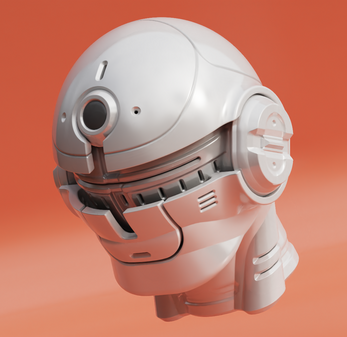

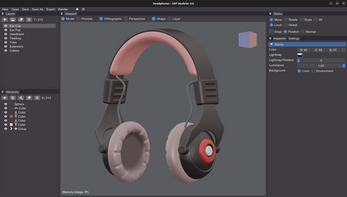
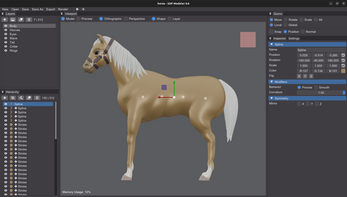

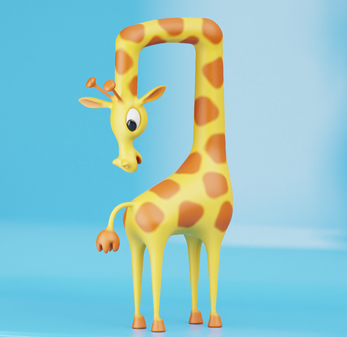
Comments
Log in with itch.io to leave a comment.
"In Search of gold, We found Diamond"
That's incredibly kind — thank you so much! :)
this new keymap feature on 0.6 made the workflow alot better for me, loving so much every update, amazing program, i wish i could give infinite stars for each update but they dont stack :/
Thanks for the kind words — glad you like the new update :)
Version 0.6 tested....and approved !!!
A BIG 👍 Thanks !
Really glad to hear that! Cheers Sascha :)
Can you take two primitive shapes turn them into a union or group them as a single primitive shape,and use that shape to subtract or intersect into a another primitive shape.or can you subtract a shape cut into another shape,and make that a union or a single shape,and use that single shape to subtract or intersect into another shape.Im coming from using womp3d
Hi,
you can simply drag and drop one shape onto another in the hierarchy to combine or group them.
Cheers,
Sascha
thank you first time using your software
Hi Sascha!
the tool now is really strong at creature sculpting, but for hardsurface design I think there is still a last puzzle piece,the sub group or nest boolean group whatever call it.something like below
https://www.youtube.com/watch?v=3B5g8dKBeHg
is it possible to implement this in the future ?
Hi,
That’s already possible :) You can simply drag one shape onto another in the hierarchy to create a subgroup or nested boolean group.
Cheers,
Sascha
Hi Sascha.
Dan again 😉. Im using now a lot SDF Modeler now in conjunction to blender and found an easy way to texture more details with pictures and stencil painting above existing vertex colors, and as color attributes can now be preserved after voxel remeshing or quadriflow remeshing within blender itself, things gets more and more interesting now. I would like to express my gratitude for that.
The only little very small limitation i should say is snapping rotations at increments of for instance 5 degrees to get perfect ortho orientations quickly. Instead of having to rotate on an axis, guessing the right acting axis, then entering...90, 45, 60, etc... afterwards in the corresponding column. In addition to the actual very appreciated reset rotation feature, that should be something huge for the user.
Thanks a lot Sascha for great works.
Have a nice day. Yours sincerely Dan.
Hi Dan,
Thanks a lot for the feedback! Rotation snapping is definitely planned, with angle increments to make clean ortho orientations quicker and easier. It will complement the reset rotation feature nicely.
Have a great day.
Cheers,
Sascha
Wow sooo nice to hear it !! That would be GREAT ! Can't wait to test it.
Great days to you too👍
Sincerely Dan.
I love it! This is the tool that I really needed for doing 3D solo game jams!
Have you considered open-sourcing it? Or maybe would you like to have some help?
Thanks! I’ll most likely open-source it if I ever grow tired of it, but for now I’m really enjoying working on it. I’m honestly pretty bad at working in teams, so for both your sanity and mine I prefer to work solo :D
Cheers,
Sascha
very nice and simple to use out of all SDF modelers i tried this is fav. One thing i have to complain but really more of a observation actually is that when you grope shapes and if you want to scale the group in only one axes you can't.
Thanks a lot for the kind words, glad you’re enjoying it!
You’re absolutely right about non-uniform scaling on groups — that’s not supported at the moment because of how the system handles transformations internally. Once you mix non-uniform scaling with rotations in the hierarchy, the math turns into shears and other distortions, and the current SDF pipeline isn’t set up to handle that cleanly.
It’s definitely a technical limitation rather than an oversight. Appreciate you pointing it out, and who knows — maybe one day I’ll find a neat way around it.
Cheers,
Sascha
OK, I see. Maybe you could merge the groups into one solid shape rather than still keep them separate and maybe keep these shapes that you create in a special shape tab to use them later in different projects. I have no idea about the real math behind it, so it probably is not possible! :))
I’m planning to add a template/prefab system in the future that will make it possible to reuse shapes across different models. That said, it will likely be independent of the grouping feature.
Cheers,
Sascha
look so good 😊
hi! im amazed by the simplicity and perfection from this program, i wonder if there is any chance, one day, you make a "blender like" keys to press G to move the object, then press X or Y or Z to move and snap in the axis
Hi. You can find the keybindings already in the setting's tab already in the shortcuts in the bottom and edit them. Hope that helps....
Have a good day.🍰
Thanks a lot for the kind words! This request has actually come up quite a bit recently — the idea of entering a transformation state directly (without having to click on the gizmo first). I’ll see what I can do about bringing something like that in.
Cheers,
Sascha
Hi Sascha. I saw some requests about exporting formats, a big number of comments about classical triangulation export ones. But I was thinking... what about render image formats ? As I understand SDF Modeler is more about shaders isn't it ? As 3d in this case involves depth in some case I suppose, could rendered image keep some information in a kind of "pass" maybe in a format that keeps it like HDR or more open one like EXR. I tried some apps using depth in relation with transforming 2d to 3d or mixing depths of 2 images in a 3d render even beeing polygonised afterwards... Are you planning to develop to render separeted "passes" in the future ? Or will you take another direction ?
Thanks for your good (excellent should I say) job. Have a nice day.
Yours, Dan
Hi Dan,
A lot of people ask about some kind of “shader export” they could plug into Shadertoy or similar. The thing is, SDF Modeler doesn’t just brute-force raymarch — it uses a more sophisticated setup under the hood. That’s why it runs fast even with lots of shapes.
So simply exporting “passes” or a GLSL shader wouldn’t really reproduce what the renderer does here, and in practice would likely be far too slow.
Cheers,
Sascha
So, you mean?... Please excuse me for my ignorance in that matter---The viewport should be temporarily less reactive? Or exporting a 2d black and white or grayscale render of an image in HDR format instead of png could take too long to render ? For sure this seems complex more than I can imagine. For instance I just know that in Blender the depth can be rendered in the viewport in eevee realtime using opengl or vulkan, but it's another story. This radically seems not to be based on the same basis, and even if im not a developper the idea was simply interesting in an artistic point of view .
Please let me know eventually what you think if you wish. However thanks for your explanations and for your time. Good evening.👍
Ah, got it — thanks for clarifying! I was thinking in a different direction. That's not something SDF Modeler is really focusing on right now, since the main goal is interactive modeling and mesh export. But I do see the artistic use case you have in mind, and it could be interesting to revisit later once the core feature set is more solid.
Cheers,
Sascha
Hey, promising ! But challenging probably 😉
Thanks Sascha.
App works great on OSX, so many thanks for that. Downloaded it and gave it a go without any instructions - made some decent progress for a first try. Great job, this could easily be a commercial app come v1.0.
Only thing we really need is a better exporter, gtlf or fbx ideally :)
Thanks a lot!
GLTF or FBX would definitely be nice to have, but they’re probably only worth targeting once the generated geometry is more game-friendly. Right now, the export is still very high-poly and not really optimized for real-time use, so I’d like to improve topology and possibly add simplification options first. Once that’s in place, formats like GLTF and FBX will make a lot more sense.
Cheers,
Sascha
Hi Sasha.
Well, I've been testing the latest version this morning and wow! New amazing bridge feature and lot of good stuff going on. Such as spline tension, etc... And happily surprise to see a little , simple but so useful qol improvement : resetting the original position rotation and scale by the means of a button. So cool, thanks a lot ! Very fond of all that, good continuation !
Have a good day. Sincerely Dan.🤯👍
Thanks, Dan!
Really appreciate your continued support. The bridge operation opens up some interesting new possibilities to create curved surfaces. I’m glad you’re enjoying the new features.
Cheers,
Sascha
are there keyboard shortcuts? I can't find any if there are, and if there aren't, just adding a few would make this so much easier to use, especially if they are mappable. I keep pressing "g" when I want to move an object, lol. Great piece of software though! super excited to see how you develop it further!
Hi! By default, the shortcut for Move is the W key. You can change key bindings in the Settings tab to better suit your workflow — including mapping it to G if that feels more natural.
Thanks a lot for the kind words — really glad you’re enjoying the software!
Cheers,
Sascha
Thanks! I feel a little silly now, lol
hey, just saw this tool and it looks awesome. i downloaded it for a M3 mac with Sonoma. i cant seem to open the application "You can’t use this version of the application “SDFModeler” with this version of macOS.". Unless i go into the package contents and open it from there. Any tips?
Hi,
I’m still a bit of a newbie when it comes to developing for macOS 😅 — this might be resolved in the next release with updated notarization.
In the meantime, feel free to join the SDF Modeler Discord for easier troubleshooting:
https://discord.gg/U7yxeqJBfW
Thanks for checking it out!
Cheers,
Sascha
a couple of things i made within the first couple of hours of using this amazing program.
i absolutely love the way sdf modeling works. it feels so natural and controllable, i believe this paired with some sort of automatic retopology technique, maybe ai? could be the future of 3d modeling!
Beautiful images! :) SDF modeling definitely feels freeing — no more thinking about the constraints of the past. Glad you're enjoying it!
Cheers,
Sascha
What a fantastic piece of software! Loving it. One problem I seem to have with it is that I cant use my taskbar anymore when using it - need to do alt+TAB to switch between apps. I do use Start11 which is changing my taskbar but never had this happening with any other software so... MAYBE a bug? Either way I am having lots of fun. Let me just repeat what others said already - it would be cool to see some additional export file type options because PLY for now I can only open in Nomad :D So sure it would be appreciated. But you do you - as a creator of such wonderful app I am sure you have many more better ideas what to do :D Looking forward to further versions - I think you are really onto something here!
Hi,
as I already mentioned on Discord — I’ll definitely look into the taskbar issue!
And yep, I’m fully convinced by now: we need more export formats 😄 Thanks a lot for the kind words and the feedback, really appreciate it!
Cheers,
Sascha
YEah thank you - sorry I first asked here, then I saw Discord exists ;)
No worries at all — just wanted to make sure your message didn’t go unanswered here too.
is there a community like discord for this tool? i would love to join people working using this!
made this with sdfModeler first try: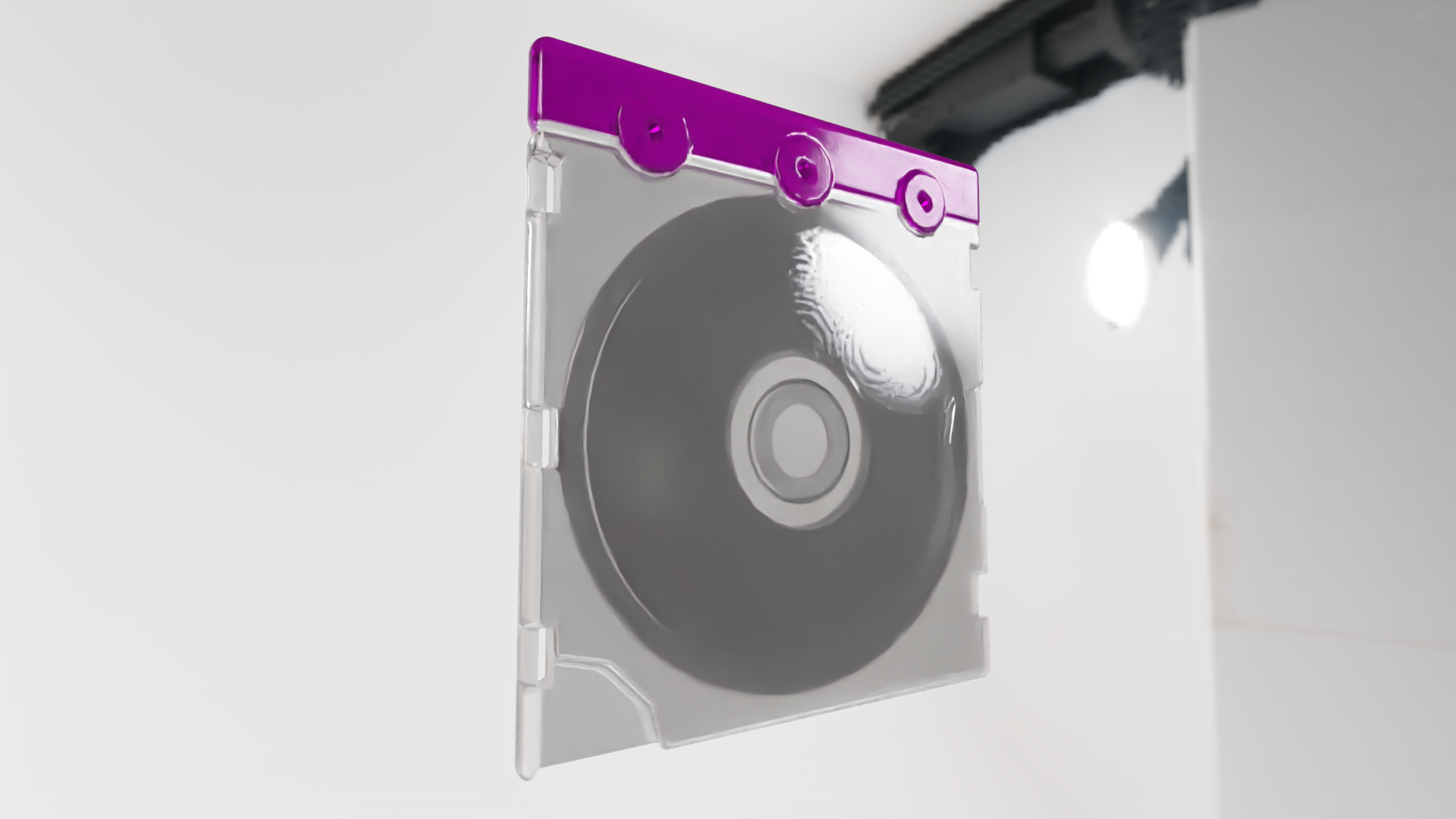
That’s cool — glad you’re having fun with it! There actually is a Discord server, though I’ve mostly started it for troubleshooting:
https://discord.gg/U7yxeqJBfW
Everyone who’s interested is welcome to join!
Cheers,
Sascha
It would be very useful if you could “invert” field (i.e. where there’s no volume now there is and where there was volume, there’s void). Would make creating tricky geometry easier.
Thanks for the suggestion! I’m planning to add more blend operations and options over time. We’ll see what’s feasible as things evolve.
Cheers,
Sascha
Hi, I'm the one who commented that I couldn't copy, paste or cut between the hierarchy tree and layers, well, dunno why, but now it works. Magic! ;)
Thanks a lot for your patience and your superb app and of course for a Mac Version :)
Interesting! I’ll definitely take a look into it — sounds like a weird one.
Thanks, and you’re very welcome — glad you’re enjoying the Mac version!
Cheers,
Sascha
Could you add “regular mesh” export, like OBJ, STL, GLTF or FBX? That is, unless it’s there and just wasn’t mentioned in the description.
Would be useful if one wanted to use it to create stuff for 3D printing or games/3d animations.
Hi, this question has been coming up more frequently lately, and I totally get why. I’ll definitely try to add support for more export formats when I find the time. Thanks for the suggestion!
Cheers,
Sascha
I think the best one to start with would be STL, since it’s the 3D printing standard and main 3D packages such as Blender and Maya have decent importers for it so it can also be used for regular 3D export. PLY is good, but not all 3D software support it well.
Just saw on Youtube, looks Great!! There's only one thing to ask, is there a setting to toggle the rounded edges(bevel) profile of a primitive to zero(off)?, I am asking from the point of view of making low poly after achieving a shape.
Thanks a lot — glad you like it! :)
The roundness of a shape definitely affects the final result, but the main issue when aiming for low-poly geometry is actually something else: there's currently no implementation for simplifying the exported mesh based on a geometric error tolerance.
What you'd need is an additional step during export that merges similar or flat triangles to reduce the overall count. That’s not implemented yet, but it’s something I’d like to look into for future versions.
Cheers,
Sascha
You could always decimate (if it’s to be a static object and thus not needing decent topology) or remesh in Blender as a final step.
By the way, it would be neat if there was a version of this that works as a Blender plugin. ConjureSDF is too expensive.
This looks awesome! Can't wait to try it.
Hi all. This is a test after a week of using SDF Modeler in one hour...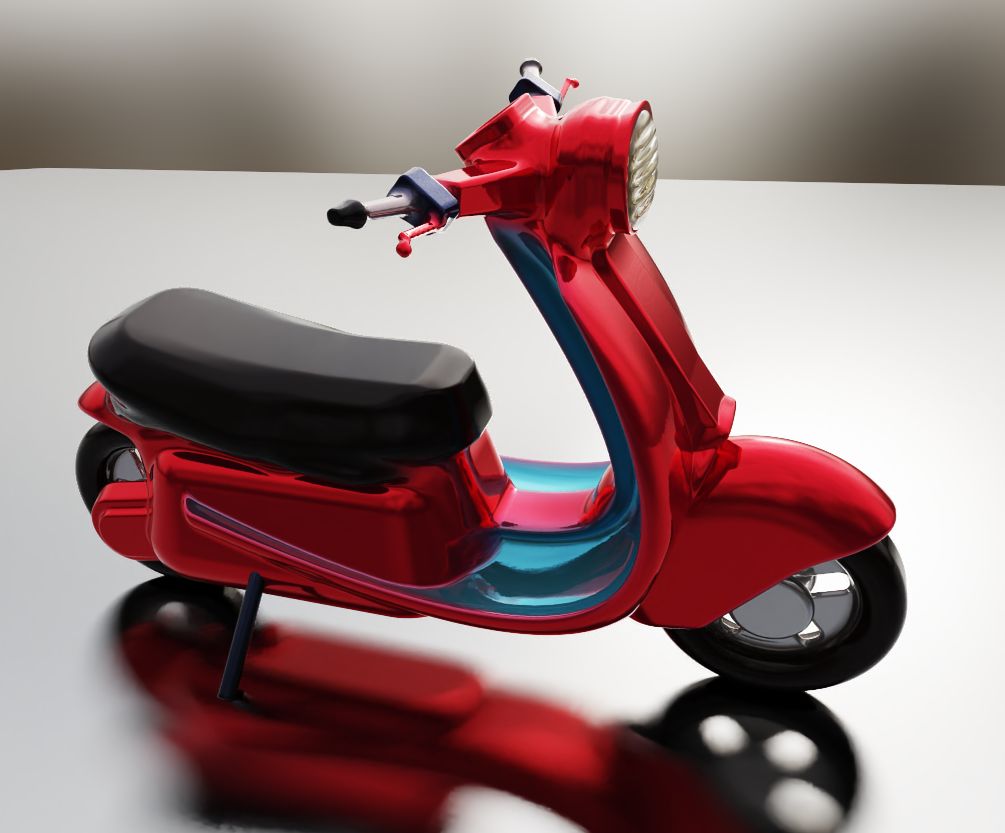
Could have been much longer using other software...
Niceee!
Thanks, man. 🤗
Great tool!
I tried to model a stylized plank for testing purposes. The only feature I currently miss is spline profiles (I want the bottom of the wood grain line created by the spline to become sharp).
Thank you for your work!
Thanks a lot! Really glad you’re enjoying the tool.
I’m actually working on a first implementation of spline profiles right now, so stay tuned.
Cheers,
Sascha
Dude! This is so cool! I'm a professional 3d artist and this makes modeling fun! not for production sure, but as a concepting tool it's really cool. The only small issue I had is that the model came to blender with flipped normals for some reason but whatever.
Thank you so much — really glad you’re enjoying it!
I’ve already taken the first step toward improving topology and export quality in the next version, and I’ll make sure the flipped normals issue gets addressed as well.
We’re still in the early days of this new modeling technique, but it definitely feels right in a lot of ways. Give it some time — maybe we can help make it the new status quo :)
Cheers,
Sascha
Hi Sascha! Great tool! I saw it on AskNK on YouTube and turned my son onto it, but am also having a blast with it (I mainly use Blender). I do have a question, which may sound stupid, but is SDF Modeler free to use for commercial purposes (ie; modeling miniatures for 3D printing, making models for games, etc). Just always have to cover the bases! :)
Cheers for all the hard work!!!
Hi, that's lovely. It is completely free to use for anything your heart desires. Feel free to use the models commercially, whether it's for 3D printing, games, or anything else. Have fun creating, and I'd love to see a picture or two! :)
Cheers,
Sascha
Thanks Sascha!!! I'll definitely have him take a snap of something once he figures out what he likes enough to print :)! He's actually quite enthralled by the whole thing. He really didn't enjoy using Blender at all lol, but is absolutely loving SDF Modeler :)
Dude. Rulin. Congrats on a rad piece of software :)
Awoooooooooooooooooooooooooooooooooooo
Thanks 🤘
Thanks so much, I really appreciate it! And that image looks really cool — love seeing what people create with the tool. Glad you're enjoying it so far!
Cheers,
Sascha
I'm genuinely impressed with this tool! Thank you for creating it. Even though I studied 3D art and animation, I’ve always found it difficult to handle complex and especially rounded shapes compared to my peers. With this modeler, I managed to create a cute, chubby astronaut in record time. Getting smooth, rounded forms was incredibly easy, something that would’ve taken me ages in Maya or Blender. Please keep developing it. If there's any way I can support the project or donate, let me know.
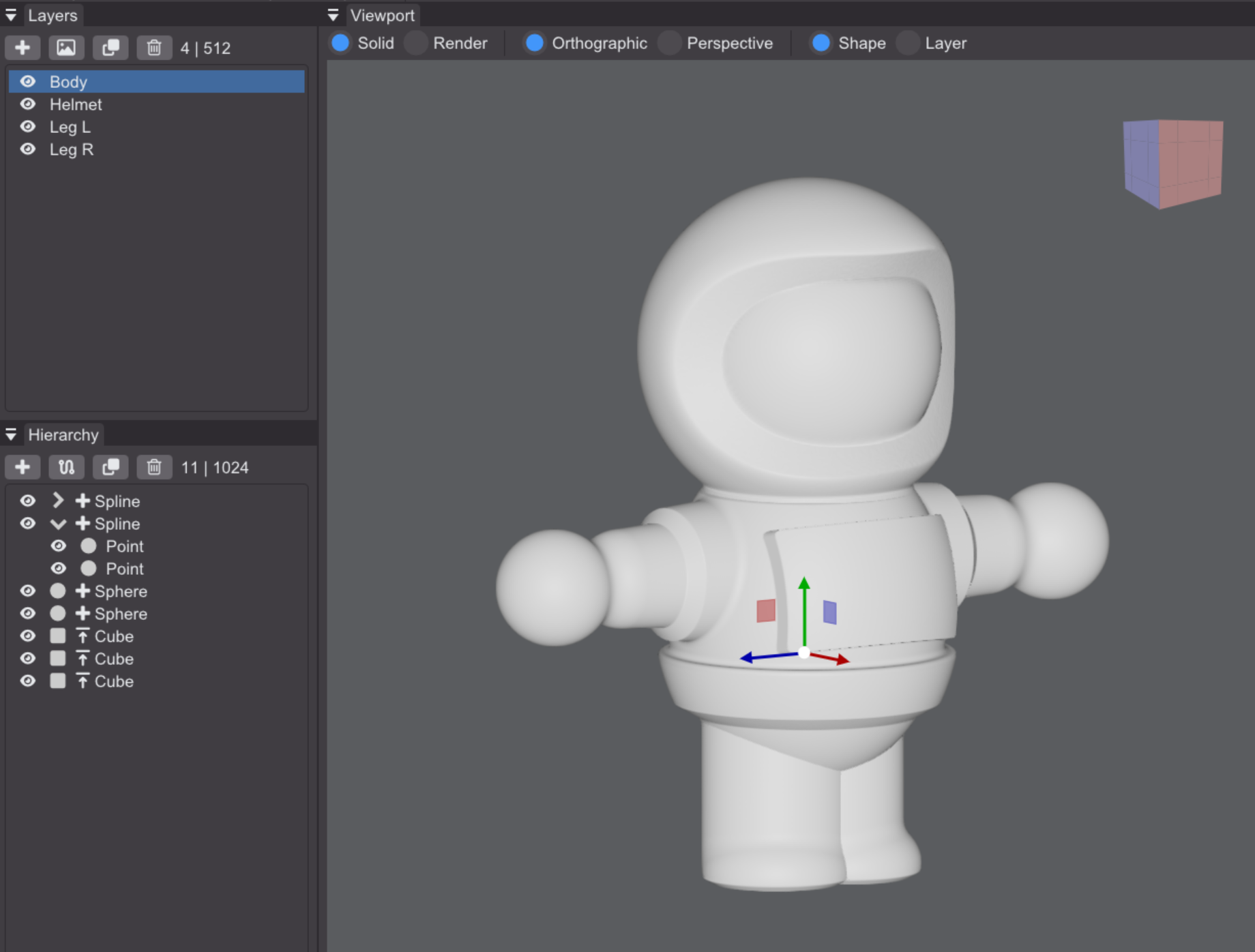
One small feedback: I noticed the face normals are flipped (backfaces showing in front) when I import the PLY into Blender. A quick and dirty fix is scaling X by -1, which works for a symmetrical model like mine. I can't recalculate or flip the normals because the model exports with 13 million tris, and Blender chokes in Edit Mode. I don’t mind the highpoly count though, works great for high-poly baking or tossing into ZBrush. Would be nice to have a toggle to flip faces on export or import.
Hi, I had the same problem, but its easy to fix it in SDF Modeler itself: you simply go to layer panel, to select each one but in the inspector panel in the right view, you see layer name and just under the resolution with the arrow you can toggle between resolutions, by default it's 512*512*512, but you can lower these values like 128*128*128 or even lower, but evidently you will loose in quality, so be aware of it ! If you have different layers, each one can have its own resolution, so you can tweak different resolutions accordingly, if more intricate details exists, do not go too low... if the shape looks simpler, you can get relatively low.
In the Blender side, applying a decimate modifier after this is sometimes not necessary, and the make normals outside works perfectly.
Hope it helps. Cheers. Dan
Thanks so much for the kind words! I'm really glad to hear the tool helped you create something fun and that it made working with rounded forms easier — that’s exactly the kind of experience I’m hoping to enable.
Regarding the normals: the export method will be changing in the next release, but I’ll make sure to double-check that the normals are no longer flipped.
Thanks again for the support and feedback — it means a lot!
Cheers,
Sascha
Bit of a feature request. Being able to export as a .STL file from SDF Modeler would be great. I am making 3D Models with SDF modeler and it is a pain to import into blender then export as a .STL then import into my slicing program.
Being able to cut out the exporting to blender bit as a .ply would be great :)
Thanks for the suggestion! I totally understand that going through Blender just to get an STL can be a bit of a hassle. I’ll definitely try to add more export formats like STL along the way to streamline that workflow.
Cheers,
Sascha
Thank you so much!
its very nice! GREAT WORK!!! but heres my feedbacK: similar to womp3d there are way to many triangles so its not usable for game developement. i look for a sdf modeler where i can even make a character and rig it in blender (maybe a open with button) with no worries about the topology. also i would like to change the spline shapes.
Thanks a lot, I really appreciate the feedback! I’m currently working on improving the quality of the mesh export — the focus is mostly on generating better topology for now. Mesh simplification is also planned for the future, along with additional spline profile options.
Cheers,
Sascha
hey, what's up, i think the focus should probably just be on making great tools for modeling, the export system should just be some form of decimation, for me personally it wouldn't matter how dense it is as long as i can open it in zbrush for further dynamesh / decimation
but the original high poly should probably be around 1 mil for baking on the retopologized / decimated version that people should do on their own, so i recommend just focusing on great tools for creating models
right now there is a void in the SDF vr modeling space with 3d modeler from Adobe being the only one worth mentioning that has recently been downgraded to abandonware, i recommend making this tool available for vr with a very robust user interface and good customizable menus / tools / stamps / brushes / compound stamps ( created from multiple objects ) etc.
Hey, thanks a lot for the feedback!
Mesh simplification will definitely be optional. Users who want to work with high-poly output for baking or sculpting workflows will absolutely be able to do that.
As for VR, it’s definitely something I find interesting. It would require a significant UI/UX redesign though, so it's more of a long-term goal. Still, I really appreciate the suggestion and the motivation!
Cheers,
Sascha
Well I know how to solve your problem. In the layer resolution you can change this by lowering it. For instance it's 512 x512x512 by default. But lowering these values and exporting in ply in different layers does the job. Hope that helps. Cheers.
Thank you will try that!
Not how 3D works. It can spit out a billion triangles and still be perfect for the job the tools of it kind are meant to fill. When working with SDF, CAD and sculpting, it is understood that retopo and later baking are necessary steps on account of what they do, and why they are used in the first place.
This SDF modeling software is by far the most intuitive and simple to use. I tried Substance 3d Modeler, and it's quite good, although it lacks some fundamental features (it's still quite young). On the other hand, Clavicula is very powerful but has a learning curve. There's also the ConjureSDF addon for Blender, but it's quite performance-heavy. You're doing really good work here, being a pioneer of this new but very promising modeling technique, which has the potential to be the future of 3d modeling. Well done.
I have a question regarding this software. There is one, in my opinion, crucial feature that I would really like to see implemented here, and that's the option to import a custom .obj or .fbx model and convert it into an SDF one. Do you plan on adding this feature in the future, and is there a workaround as of now? I really appreciate any help you can provide.
Thanks a lot! I really appreciate the kind words.
Importing triangle meshes and converting them into SDFs is definitely planned at some point. I already have some ideas on how this could be implemented, but it will likely take a bit of time before a full feature like that is ready.
Interestingly, the idea of reference meshes has come up quite a few times already. A more feasible short-term approach might be to allow building SDF models around existing meshes — that would be much simpler to add and could already support many workflows.
Thanks again for your support and the suggestion!
Cheers,
Sascha
Sadly, it seems that Substance Md is not in development anymore.
Hey there all, Hi Sasha,
As a complete noob in 3d formats other than polygonal ones, like traditional OBJ, .ma, .Ply, blend files, etc, I was thinking about SDF modeling formats instead;
As polygonal systems share some fundamental data, and can be then converted and shared between and into different software, similarly, is there any "basic SDF" format that could be shared and exported elsewhere ? I've seen some .json files that can be actually rendered somewhere, but could it be transferred to be used elsewhere (in different software using SDF) even if each one wants to keep its own format ?
If not, why ?
Probably my worst question ever, but that could be very useful in an artist point of view... Anyone could tell me I greatly appreciate that. Thanks in advance.
Yours sincerely. Dan
Hey Dan,
That’s actually a really interesting question! In theory, a common SDF format would be awesome, but in practice it’s quite difficult. A lot of fundamental aspects would need to be standardized—like what blend/shape functions to use, how shapes are parameterized, or how hierarchies are handled.
For example, in Womp you can assign materials per shape, while in MagicaCSG and SDF Modeler it’s usually done per sub-model or layer. These differences make it tricky to create a “universal” format that would work well across different tools without losing information or behavior.
That said, it’s definitely something to think about for the future if more SDF tools emerge and interoperability becomes more relevant.
Cheers,
Sascha
Thanks for clarifing this topic. I had some intuition about this because some primitives behave differently from a SDF software from another. The "math" behind this seems to be different, even if the shape could be the same. I understand more now. Interesting !
Thanks again.👍
Hi, Sascha.
I've been posting my first real "tutorial"-ish on some features I found easy to use, there :
I must admit this is not the best of "art" but some introduction to modeling. It had to be the simplest as I could.Perhaps someone could make it faster, more spectacular, but I hate timelapses, because it's cheating somehow 🤯..
Have a nice day.
Dan
Hi Dan, very cool — thanks a lot for your continuous support!
Cheers,
Sascha
Just a little contribution for what you have done so far...👍
Hi Sacha. An idea (as a fellow Macbook m1 developer) could be to port the entire app to WebAssembly/WebGPU (some unity games have done this on itch.io)
Then anyone with a web browser can use the tool and share their creations: limitless possibilities
Limitless until you have an internet connection... limitless until you allow others to benefit your hard works your art to give your author rights to these people for their own profits ....😭
Until you have to pay for your own work. But that's just my own thinking about what if simply downloading an app could not be possible anymore one day...some major software no more available. I dont want a future like this... and Im not the only one I hope!;
The only advantage imho (if it keeps the ability to be downloaded) is to be accessible to different platforms.
Other than that I doubt...
I'm also not a fan of online tools. There's always a layer of overhead, the need for a connection, et cetera.
Hi Sacha,
Testing latest 0.51 version Im again pleased to use the latest features and noticed that's rejoining my modeling needs to make this tool uncredibly fast and extremely fun to use. The reference image import, the spline, circular and rectangular repeats etc...all of this is "magic" and I have a lot of fun using all of it. I heard about changing the mirroring plane orientation in the future. Or maybe choosing one of the regular XY,XZ,YZ . This could be cool, even if the actual tools already allow this in some way. Is that in your plans ?
What if posting renders in a gallery for those wanting to show what is possible to make in SDF Modeler now, could that be possible ?
Again Sacha, thanks for your hard works!!! Have a good day take care.
Thanks Dan, I’ve actually already thought about adding an option to pick the mirroring axis – it’ll probably make its way in at some point. This also would add more flexibility to mirror on a single layer. Best regards
Wow, nice! You mean, picking the mirroring plane and moving it around ? That's a big idea !
Great ! 🤩
So cool ... it would probably be ... if I could only run it on my M1 Mac ;( Any chance of having a Mac-Version? Even windows under parallels has only OpenGl 4.1 so no chance this way.
Hi, I’ll try to get my hands on a Mac in the near future and look into what kind of effort it is to port it. You're definitely not the first one to ask about this :D
Yeah, I think so too ;) I wish you success ( of course :)) just make sure to get a Mac with the Silicon Chips. If you need help, the only ting I successfully did compiling wise is compiling Godot. That was an easy procedure though.
Okay so I had trouble running this on Debian. Some of the lib files are not exported as links. Im not sure how you can create installation work but I had to do following commands to get it work:
cd /lib
rm -f libOpenImageDenoise.so libOpenImageDenoise.so.1
ln -sf libOpenImageDenoise.so.1.4.3 libOpenImageDenoise.so
ln -sf libOpenImageDenoise.so.1.4.3 libOpenImageDenoise.so1
rm -f libtbb.so libtbb.so.12
ln -sf libtbb.so.12.5 libtbb.so
ln -sf libtbb.so.12.5 libtbb.so.12
This navigates to the lib folder, removes broken files and creates new links.
Interesting! I’m not creating the links myself; they just come as part of Intel’s Open Image Denoise library. I also have a laptop with a recent Debian version for testing and haven’t run into this issue so far. But I’m still learning how to properly deploy software on Linux, so have mercy on me! :P I’ll try to look into it. Thank you for letting me know.
Best regards,
Sascha
If you have some time to spare, you could try replacing the library with the one from their GitHub page and let me know if the issue still persists.
When I download current OpenImage release v2.3.2 I get this error:
./SDFModeler: error while loading shared libraries: libOpenImageDenoise.so.1: cannot open shared object file: No such file or directory
If I create symlink "libOpenImageDenoise.so.1" to latest library "libOpenImageDenoise.so.2.3.2" I get this error:
./SDFModeler: symbol lookup error: ./SDFModeler: undefined symbol: oidnSetFilter1b
Its likely latest library is not compatible with application
Version v1.4.3 works fine. There is no need to remake symlinks they work when extracted.
Yes, that is expected—the OIDN interface changed after version 1.4.3 and the library even became more bloated with all the GPU support. I haven’t been able to reproduce the issue so far, but I might try reuploading the release to see if that helps. Thanks for trying it out!
Issue is with the way its unzipped. Some file managers might have handy right click unzip archive option but that might fail to recreate links when its extracted.
Unziping archive with works:
unzip "SDFModeler - Linux.zip"
Fun and interesting little modeler, great work! Is there any chance you could open source this in the future? I'd love to have a good FOSS alternative to MagicaCSG and extend the functionality. There aren't many serious SDF modelers out there unfortunately.
Thanks! Glad you like it :) Open-sourcing is the most likely scenario at some point in the future.
This is ABSOLUTELY HUGE ! SDF Modeler is becoming a very serious app with everything to get professional results. Now I understand why you choose to arrange things inside it in a logical way before adding a ton of features. This keeps it simple to use and intuitive in the same time. In comparison to paid (and often very expensive )alternatives, for me it's so nice.Thanks a lot for allowing me to get this for free. I'm trying to share to friends as much as I can.
Wishing you the best.
Yours sincerely. Dan.
Hi Dan,
Thank you so much for your kind words! I really appreciate your support. I’ll try my best to make it as cool and fun to use as possible, there is still plenty to do, but messages like yours are super motivating.
Wishing you all the best as well!
Cheers, Sascha